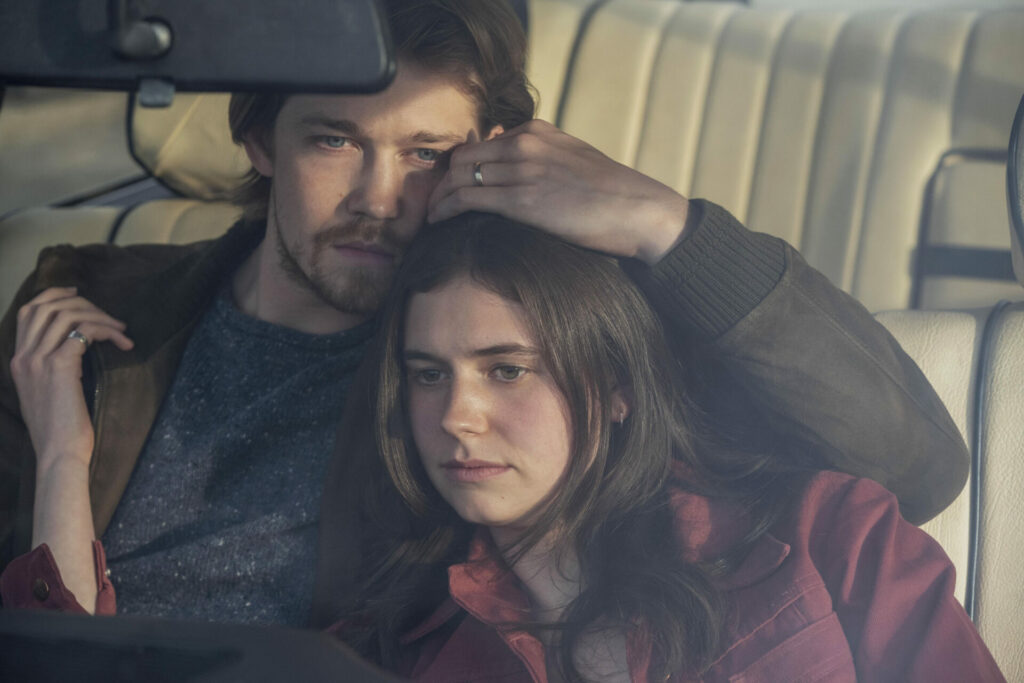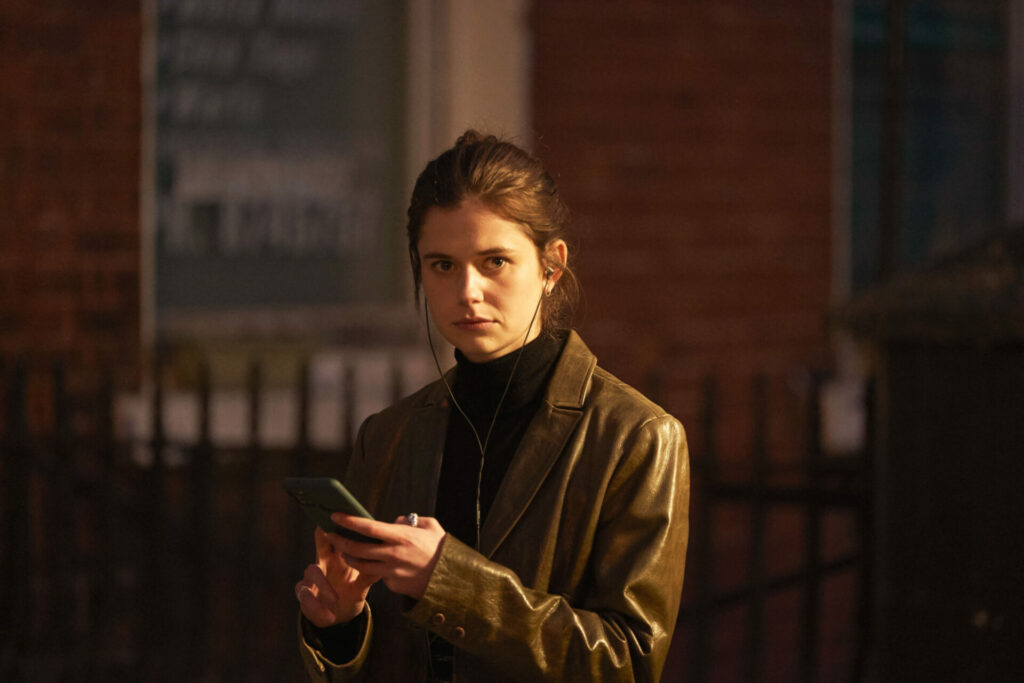Why we’re so obsessed with Sally Rooney’s sex scenes
As BBC Three’s Conversations With Friends adaptation hits screens, intimacy co-ordinator Ita O’Brien explains how to create explosive erotic tension on-screen
By Emma Firth

It started innocently enough. Late night YouTubing “girls kissing,” before hurriedly erasing all search history on the family computer for fear of being ‘outed’. Rewatching Titanic with perverted precision, reaching peak euphoria when Jack sees Rose naked for the first time. This was teenagedom, the horny loner years, absorbing the intimate lives of fictional others long before my own body was ready to receive such adventures in lust.
Fast forward to April 2020. In lockdown, craving the (then illicit) touch of strangers, these archaic feelings crept back into my psyche like a thundercloud, with the aid of the BBC’s adaptation of Sally Rooney’s Normal People. There I was, enviably pining for Marianne and Connell’s sexual awakening whilst coming of age. There they were, discovering themselves through the embrace of the other. (Evidently, I was not alone in feeling this; Normal People became BBC iPlayer’s most watched series of that year, streamed over 62 million times.)

What makes the sex in Normal People so inherently sexy can be traced to a very simple invitation at first: a look. Searching. There’s a nakedness, albeit fully clothed. The first minute of the series opens with these characters not speaking in the school corridor, only briefly catching the other’s gaze before both shyly looking away. Over time, this communication grows more intense to marry their increased longing. Such is the case during their first year at university together, reunited after a period of separation, when Marianne emerges damp from the shower in nothing but a robe and walks slowly towards Connell, neither party breaking eye contact. How that scene unfolds is intoxicating. From Connell’s expression, so obviously full of wanting to be physically close to her again to her deep inhale as he begins to undress her and kisses her tummy, before she finally breaks the silence and whispers into his hair: Come to bed then.
“It always starts with a gaze,” says Ita O’Brien, the show’s intimacy coordinator. “[It’s the beginning of a] journey into each other’s space. There’s an uncomfortableness, a degree of unconfidence, underneath the surface of this deep desire.”
“It always starts with a gaze”
— Ita O’Brien, intimacy coordinator for Normal People and Conversations With Friends
This connective tissue is respectably present in BBC Three’s new TV adaptation of Rooney’s debut novel, Conversations With Friends. It charts the simultaneously passionate and painful romantic saga between a 21-year-old aspiring poet, Frances, and an older married actor, Nick. Their glances are almost entirely stolen, a secret language that strikes and bends to meet a different chord. This dance, the not-touching-touching, is just as sensually significant, if not more so, as the spoken exchanges, as skin-on-skin. It’s a palpable, “wide-eyed yearning”, says O’Brien, who was once again called on to choreograph the series’ intimate scenes. According to O’Brien, producer Catherine Magee described Conversations With Friends as “Normal People’s elder and more complicated sister”.
O’Brien’s role requires great physical and emotional strength. After training as a ballet dancer and actor at Bristol’s Old Vic in the late 1990s, O’Brien went on to work as a movement director and intimacy coordinator, with a CV that includes productions like Sex Education, It’s a Sin and I May Destroy You (in the case of the latter, Michaela Coel dedicated her 2021 BAFTA win to O’Brien during her acceptance speech).
“The intimate scenes are like a dance, reacting to a rhythm, but also there’s this element of not knowing, a discovery,” O’Brien says. “You’re intimate when you’re having sex, but intimacy is so many other things too. [It’s about] relishing that, [both] the touch and gaze.” In Conversations With Friends, just before Nick and Frances kiss for the first time, finally alone together in an upstairs bedroom at a birthday party (his wife’s), he cools her flushed skin down with his beer bottle before she meets his mouth. A few beats pass before he surrenders and kisses her back, with an almost primal sense of urgency. “Both Marianne and Frances have agency,” O’Brien says. “[Both are] listening to their sexual desire.”
“The intimate scenes are like a dance, reacting to a rhythm, but also there’s this element of not knowing, a discovery”
— Ita O’Brien, intimacy coordinator for Normal People and Conversations With Friends
This power plays into every groove, daring the other to move a little closer each time. “There’s a complexity to these scenes,” O’Brien says. “They’ve found someone they trust – that they connect with on this physical level. It’s the same for Frances and Nick, and Marianne and Connell; a body-mind-spirit connection.” And those initial interactions (Marianne: “Are you going to start kissing me again? Can we take our clothes off?”) are as devastatingly tender as they are direct. Later, Marianne remarks that during her relationship with Connell they always, “fucked each other, [had] mutually, equally involved, sex”. The fact they never stop questioning, or confirming, their pleasure during these acts of erotic desperation (Is this OK? / Is that good? / I want this) is delightful to bear virtual witness to. It still feels somewhat alien to see, owing to its rarity on screen – which is odd, really, as it’s clearly hot when someone explicitly cares about what makes you feel good.

Indeed, these brushstrokes of authenticity are alluring. I cast back to when Normal People was first released two years ago, dissecting the frenzy around these ‘graphic’ scenes with girlfriends over WhatsApp. “They’re realistic,” one posted in the chat. There’s the build-up, the taking off of underwear (again, a televisual rarity), grabbing condoms, consent-affirming dialogue, pre-and-postcoital laughter, lounging nude and happy-drowsy in bed together. It feels up close and personal and, above all, joyful, even in those flickering embers of awkwardness. The characters in Sally Rooney’s adaptations are so viscerally present in their bodies, and in synergy with someone else’s, it’s impossible not to be entranced by its magnetism.
Credit here goes to O’Brien’s physical storytelling. “I’m looking at the details, how body parts meander into each other, such as the spines moving together, pulling the hip towards a thigh [and] bringing the energy down to the pelvis during intercourse so that, anatomically, we believe them,” she says. “That allows us to stay more connected to the emotional journey.”
“I’m looking at the details, how body parts meander into each other… so that, anatomically, we believe them”
— Ita O’Brien, intimacy coordinator for Normal People and Conversations With Friends
The sex fundamentally serves a psychological purpose, in a sense as an extension of the characters dialogue. In text form, Rooney prefers not to use speech marks, so every type of language expressed seamlessly weaves together. Her central protagonists also share a similar quality in that they all appear to be outsiders in some way – craving to be understood, to be seen. There’s that lovely and yet torturous moment when Connell tells Marianne at university, at the time no longer in a romantic relationship, that he thought he could read her mind.
“In bed you mean?” she asks.
“Yeah, and afterwards,” he says.

For all its heady evocation, both stories draw our eye to a specific age of innocence and experience: the first time Marianne has sex; the first time Frances has sex with a man. Our fixation is mercurial, pricking different layers of intrigue. Of course, it has the potentiality to ignite the horny loner within each of us, virginal or otherwise. Nostalgically, it serves as a magic mirror to first love’s bloom. The kind that liberates and stunts us all at once (as Frances describes in the book, that interior world when “I wanted him so much that I felt completely stupid, and incapable of saying or doing anything at all”).
“Intimacy, into-me-see, starts with yourself, it is that vulnerability of really allowing someone else in”
— Ita O’Brien, intimacy coordinator for Normal People and Conversations With Friends
And yet, the timing of Conversations with Friends release this month – the first May in three calendar years we have not been under lockdown restrictions – speaks to something far more aspirational, hopeful, to be found and within reach. “Intimacy, into-me-see, starts with yourself, it is that vulnerability of really allowing someone else in,” says O’Brien. “To feel embodied, to express yourself through your body, [is] something we’ve lost over the last two years and now there’s an invitation to reconnect.”
It feels like we’re on the cusp of the real summer of love. Real sex – mind-blowing, meaningful, mutually, equally involved sex – is just that in the end, a conversation. The possibilities are limitless. It’s perhaps easy to forget, but often our attractions can be rooted in something so frank, so exquisitely seductive, as Connell’s confession to Marianne. The ultimate foreplay. I just like talking to you.
Conversations With Friends is available to watch on BBC Three and iPlayer from Sunday May 15
